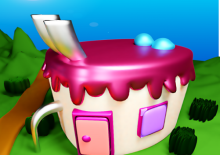Retro Games
Retro games refer to digital titles originally developed in earlier decades, primarily between the late 1970s and the early 2000s. These games are often recognized by their limited color palettes, pixel-based visuals, and minimal sound design. They were released on older platforms such as arcade cabinets, home consoles, or early personal computers. Despite the passage of time, retro games continue to be revisited by new generations due to their mechanical simplicity and recognizable visual styles.Super Smash Flash 3
Play
Sonic Smash Flash 2
Play
Jump Force Mugen V12
Play
Game of Life
Play
Purble Place
Play
Bloons TD 5
Play
Gameplay And Design Patterns
Most retro games are built around straightforward objectives and a limited control scheme. They emphasize timing, repetition, and challenge over detailed storylines or realism. Players typically complete levels, avoid obstacles, or aim for a high score. The limited memory of early systems meant developers had to design compact experiences, which often encouraged players to improve through repetition. Mechanics were usually easy to learn but required practice to master.Key Characteristics Found In Retro Games
Retro games often include:- Pixel art visuals and tile-based environments
- Chiptune or synthesized soundtracks
- Basic controls using a few buttons or keys
- Short, looping levels or continuous progression
- Score systems or time-based challenges
Today, many retro games are played through emulators or online platforms that preserve older formats. Modern recreations and remasters also allow players to revisit classic mechanics with updated visuals. Game developers often draw from retro design when creating new projects that aim for clarity or nostalgia. In some cases, new games are developed using retro limitations as a creative constraint, producing results that feel consistent with older titles.

























































